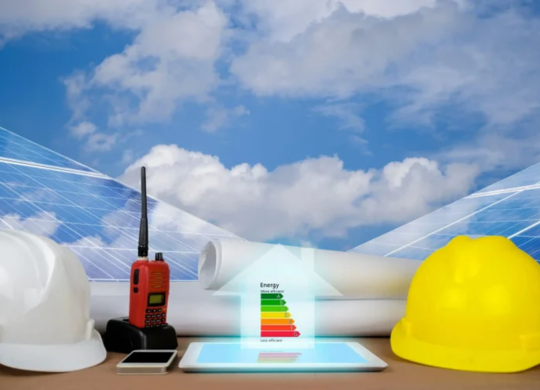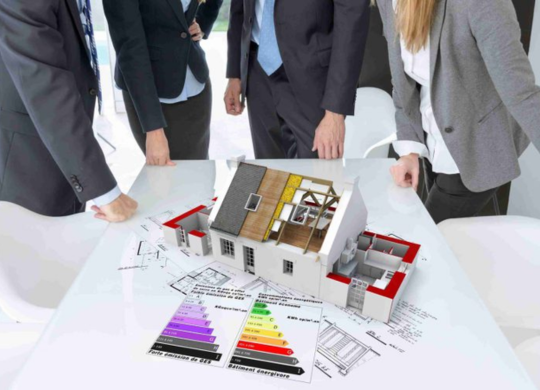ApacheSim

Central simulation processor which enables you to assess every aspect of thermal performance as well as share results and input across a wide variety of other VE applications.
ApacheSim is the dynamic thermal simulation tool that sits at the heart of any simulation that considers the energy efficiency or sustainability of a building from an energy or carbon usage viewpoint. Fully adherent with all international standards ApacheSim helps designers worldwide effectively decarbonise their buildings. Validated and accredited for use in all IESVE’s code compliance and voluntary rating system offerings ApacheSim drives the global push to Net Zero.
- Advanced dynamic thermal simulation at sub-hourly timesteps for better computation of building components
- Assess solar gain on surfaces, surface temperatures and radiant exchanges.
- Extensive range of results variables for buildings and systems.
- Building & room-level annual, monthly, hourly, and sub-hourly analysis.
- Assess passive performance, thermal mass, and temperature distribution.
- Link results from ApacheHVAC, MacroFlo, Suncast & RadianceIES and use as integral thermal simulation inputs.
- Ability to run multiple simulations in parallel using the Parallel Simulation Manager.
- Export results to MicroFlo as boundary conditions for detailed CFD analysis.
How it works
ApacheSim considers a complete virtual representation of the real building using first-principles models of heat transfer processes and are driven by recorded or future prediction weather data. Calculations consider the exact location of solar penetration and the associated solar gain throughout the building, and pressure network calculations assess both natural ventilation and forced air movement. The calculations evaluate daylight penetration and artificial light propagation so that effective daylighting design can be included in energy usage predictions. Calculations size and select air and waterside HVAC systems and along with the inclusion of renewable technologies ApacheSim provides a complete understanding of energy and carbon usage prediction for both the building and its equipment.
Overview of the Analysis Options
- User-controlled analysis time steps down to 1 minute with reportage down to 6 minutes
- Idealised or detailed HVAC plant modelling enabling both early stage and later design detail to be modelled
- Options for natural and mechanical ventilation; flexibility in simulation that allows the user to specify flows in advance or calculate directly using MacroFlo and ApacheHVAC
- Pre-simulation calculations of Solar Penetration (SunCast) or Daylight Availability (RadianceIES) providing greater insight and accuracy
- Choice of models for various heat transfer processes including internal and external convection, glazing models, and radiation models
- Advanced Tariff Analysis feature allows complex utility tariffs such as varying Demand Side Management to be quickly set for easy comparison.
- Assess ASHRAE 55: 2013 & 2017 Comfort using PMV/PPD Analytical, Adaptive Thermal Comfort and Direct Solar Radiation Methods.
- ISO 7730 Thermal Comfort assessment
- Detailed ground heat transfer modelling with KivaTM
Accuracy is import but so is speed of analysis, ApacheSim is now up to 85% faster. Find out more here:
- Run multiple Apache Simulations simultaneously
- Automatically runs pre-simulations (SunCast and RadianceIES)
- Manages cores & queues simulations
- Faster simulation mode (divide the simulation year into blocks and run simultaneously)
Advanced accurate analysis is nothing without being able to interrogate the results of your analysis ApacheSim’s output database can be browsed to interrogate every aspect of building thermal performance, from individual surface temperatures to annual energy consumption:
- Results displayed in VistaPro, along with the weather data used to drive the simulation
- Results accessible via graphical views of the building and HVAC system with interrogation of data possible at a hierarchy of levels:
- Building
- Room
- Surface
- Opening
- HVAC Component (fan, coils etc.)
- HVAC Ducts
- Multiple tables and graphs are produced for results analysis including monthly summaries, ranges or user-specified synopses
- Chart axes can be user defined and results plotted as absolute values or else divided by floor area or room volume
- Room performance indicators include:
- Room temperatures: air, mean, radiant, dry, resultant
- ISO comfort indices: Predicted Mean Vote (PMV) and Percentage of People Dissatisfied (PPD)
- Room Loads: heating, cooling, humidification, dehumidification
- Loads breakdowns: casual and solar gains, conduction and ventilation losses, plant inputs
- Surface temperatures
- Energy Consumption: Annual, Monthly, hourly
- Building and System performance indicators include:
- Totals of room and ventilation loads: heating cooling, humidification, dehumidification
- HVAC Loads
- Systems energy form Idealised plant heating and cooling energy or from ApacheHVAC linked simulation
- Energy Consumption: Annual, Monthly, hourly
- Carbon Emissions for system and building; option to breakdown by fuel
- Tariff analysis: operational cost reductions linked to energy consumption & fuel tariffs
- Energy Breakdown tab
- Use the ‘Categories’ section to expand Energy & Carbon for ‘Sources & Meters’ and ‘Uses’ options
- Essentially, different ways of aggregating the same data
- Sub-metering options within ‘Energy Sources & Meters’ – create meters for all the fuels that exist in the model then sub-meter and collate this information in VistaPro
- Multiple results can be displayed simultaneously or aggregated. Create post-processed user defined variables using one or more existing VistaPro variables. Define the functionality using arithmetic operators, functions and constants
- Design requirements for Battery Storage (size and control strategy) in VistaPro, identify impact upon imported electricity and effective usage of renewables
- Psychrometric Charts with options to display room thermal comfort and HVAC node state display or simulation weather file data
- Results can be displayed in both metric or Imperial (US) units
- Results can be exported to other windows applications for use in reports, presentations and further analysis
- Content Manager provides a central area to access and store all VE reports. VistaPro can generate the following reports:
- Heating and Cooling Report – Provides a monthly summary of the building systems energy consumption, CO2 consumption, basic comfort checks and peak loads breakdown.
- Room and Zone Loads Report for ApacheHVAC – Generate loads report for ASHRAE methods loads analysis run for Rooms, HVAC Zones or HVAC System Sizing analyses.
- Energy Report – Gives a graphical summary of the energy simulation results including; Energy End Use Consumption breakdown (Site Energy, Source Energy and CO2), Annual Energy Usage dashboard, Energy Use Intensity (EUI) chart and Energy Flows Sankey, associated Costs overview and view of Peak Electricity & Fossil Fuel consumptions alongside any Generators onsite.
- ‘Sessions’ in VistaPro
- A feature within VistaPro allowing the user to recreate all the open results; graphs or tables, that they may wish to save
- VistaPro retains the session meaning you can return to it at anytime
- Create multiple sessions for various analysis types and move between them
- Promotes efficient working methods – all analysis previously ‘open’ in VistaPro can be shown immediately.
Predicting the energy performance requires building a virtual representation of all the data associated with the actual building. This data comes from various sources, directly from a BIM authoring software, or from drawings and data sheets. Entering this data needs to be comprehensive, convenient and efficient, ApacheSim approaches this with a variety of user-centric approaches:
- Tabular Edit interface for entering properties of thermal templates, room thermal properties, HVAC systems and constructions. Gives ability to quickly enter data, review inputs and includes option to export and import *.csv files (e.g. Excel)
- Sensible and latent gains from lights, equipment and occupants
- Natural ventilation, mechanical ventilation and infiltration
- Plant operation profiles and efficiency characteristics
- Time-series profiles representing real building data, or formula / script driven profiles that can vary and adapt to the analysis outcomes during a simulation
- Comprehensive data and databases that include:
- Global weather data
- Database of constructions
- Data detailing layer-by-layer thermo-physical properties of building elements
- Glazing systems including angle-dependent transmissivity and absorptivity
- Electrochromic properties of glazing and shading devices that dynamically vary in response to model conditions within simulation
- Renewable energy generators: PV (parametric, free standing and high concentration), wind generators and CHP systems
- Library of Air and Water-side HVAC Systems
- Faster project setup using prebuilt descriptions of building data (templates) using Building Template Manager, Master Template and Design Options features. The Master Templates feature delivers bulk data copying & rapid automatic seeding of data in to a project while the Design Option feature provides a means to make specific and targeted changes to specified data in a project
Having set up the data in the model being able to visualise, check and share your interpretation of the input data is an essential step in ensuring the model is ready to simulate. With this in mind data assigned to your model can be visualised:
- Visualise many of the room variables calculated in ApacheSim including:
- Room conditions
- Simple HVAC Systems
- Internal Gains
- Air Exchanges
- Constructions
- Utilise the variables within this tool to provide clearer visualisation of the model input data for:
- Presentation
- Reportage
- Model checking
- Separate out the floors to visualise and ‘exploded’ view of the floor plans
- In ModelViewerII the distance between the floors can be altered, the exploded view can be switched on or off, and the view can be reset
Source:- https://www.iesve.com/software/virtual-environment/apachesim
Our Services
We’re here to help and answer any question you might have.
Free Consultation About RDT Design Technologies LLP
Testimonial
"Our experience with RDT Corp has been outstanding. They delivered a customized solution that addressed all our requirements and exceeded our expectations. Their commitment to excellence is evident in everything they do."

"Our experience with RDT Corp has been outstanding. They delivered a customized solution that addressed all our requirements and exceeded our expectations. Their commitment to excellence is evident in everything they do."

"RDT Corp provided us with a comprehensive IT strategy that perfectly aligned with our business goals. Their proactive approach and attention to detail have made a significant impact on our company's growth. Their services are worth every penny."







